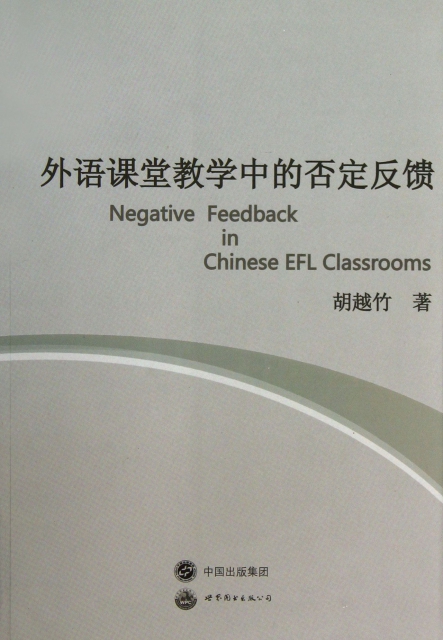| | | | 外語課堂教學中的否定反饋 | | 該商品所屬分類:外語 -> 口語/生活實用英語 | | 【市場價】 | 272-393元 | | 【優惠價】 | 170-246元 | | 【介質】 | book | | 【ISBN】 | 9787510056093 | | 【折扣說明】 | 一次購物滿999元台幣免運費+贈品
一次購物滿2000元台幣95折+免運費+贈品
一次購物滿3000元台幣92折+免運費+贈品
一次購物滿4000元台幣88折+免運費+贈品
| | 【本期贈品】 | ①優質無紡布環保袋,做工棒!②品牌簽字筆 ③品牌手帕紙巾
|
|
| 版本 | 正版全新電子版PDF檔 | | 您已选择: | 正版全新 | 溫馨提示:如果有多種選項,請先選擇再點擊加入購物車。*. 電子圖書價格是0.69折,例如了得網價格是100元,電子書pdf的價格則是69元。
*. 購買電子書不支持貨到付款,購買時選擇atm或者超商、PayPal付款。付款後1-24小時內通過郵件傳輸給您。
*. 如果收到的電子書不滿意,可以聯絡我們退款。謝謝。 | | | |
| | 內容介紹 | |

-
出版社:世界圖書出版公司
-
ISBN:9787510056093
-
作者:胡越竹
-
頁數:160
-
出版日期:2013-06-01
-
印刷日期:2013-06-01
-
包裝:平裝
-
開本:32開
-
版次:1
-
印次:1
-
字數:380千字
-
《外語課堂教學中的否定反饋》作者胡越竹在閱讀大量相關資料的基礎上對現有文獻中錯誤的定義、分類、成因、評定標準以及否定反饋的必要性、作用和決定因素等問題進行了深入分析,根據二語習得理論提出了*合理的想法,接著對作者的研究對像、方法、數據搜集和分析結果進行了詳細闡述,本書科學運用了注意假設、語言發展階段假設、輸入說、輸出說、技能習得等二語習得理論對語言學習的各種現像和過程進行了剖析,同時運用了認知心理學、社會心理學、人格心理學和教育心理學分析學生的需求和個體差異,探討否定反饋的實用性和適用性問題。
-
《外語課堂教學中的否定反饋》由胡越竹編著。
外語學習環境中,否定反饋會對學習者中介語的
形成和發展產生重要影響。《外語課堂教學中的否定
反饋》就語言錯誤的定義、分類、成因以及否定反饋
的必要性、作用和決定因素等問題進行了探討,采用
定量分析和定性分析相結合的方法,對我國外語學習
環境中高校教師提供否定反饋的情況進行了廣泛深入
的調查分析,並科學運用了注意假設、語言發展階段
假設、輸入說、輸出說、技能習得等二語習得理論對
否定反饋現像和語言學習過程進行了剖析。
-
摘要
Abstract
Chapter One Introduction
Chapter Two Errors
2.1 Definition of errors
2.2 Attitude towards errors
2.3 Evaluation of errors
2.4 Types of errors
2.5 Judgment of error gravity
2.6 Causes of errors
2.6.1 Errors of competence
2.6.1.1 Interference of LI
2.6.1.2 Intralingual transfer
2.6.1.3 Misconception-inducing teaching
2.6.1.4 Use of communication strategies
2.6.2 Errors of performance
2.6.2.1 Cognitive restrictions
2.6.2.2 Psychological restrictions
Chapter Three Provision of negative feedback
3.1 Negative feedback
3.2 Necessity and effect of negative feedback
3.3 Factors taken into consideration in providing negative feedback
3.3.1 Purpose of the activity
3.3.2 Degree of deviation
3.3.3 Clarity of meaning
3.3.4 Frequency of occurrence
3.3.5 Learners' language proficiency
3.3.6 Affective factors
3.3.7 Personality of learners
3.3.8 Other factors
3.4 Empirical studies on provision of negative feedback
3.4.1 How often errors were treated
3.4.2 What types of errors were treated
3.4.3 How errors were treated
3.4.4 When errors were treated
3.4.5 Who corrected errors
Chapter Four Negative feedback in EFL classrooms
4.1 Purpose of the research
4.2 Methodology
4.2.1 Subjects
4.2.2 Instruments
4.2.2.1 Questionnaires
4.2.2.2 Interviews
4.2.3 Data collection
4.2.4 Data analysis
4.2.4.1 Teachers' and students' response to the questionnaires
4.2.4.2 Transcription of the interview
4.3 Results and discussion
4.3.1 How often errors were treated
4.3.1.1 Teachers' opinion and corrective behavior
4.3.1.2 Students' needs and preferences
4.3.1.3 Discussion
4.3.2 What types of errors were treated
4.3.2.1 Teacher's opinion and corrective behavior
4.3.2.2 Students, needs and preferences
4.3.2.3 Discussion
4.3.3 How errors were treated
4.3.3.1 Teachers' opinions and corrective behavior
4.3.3.2 Students' needs and preferences
4.3.3.3 Discussion
Chapter Five Conclusion
5.1 Major findings
5.2 Pedagogical implications
5.3 Limitations of the study
References
Appendix I
Appendix II
Appendix III
Appendix IV
| | |
| | | | |
|




